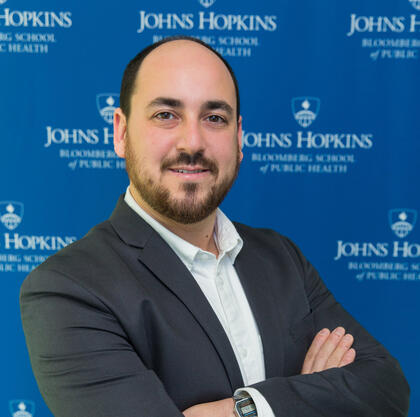As I listen to a mother describe her child's suicide, the missed clues posted online, the locked door that prevented rescue, I know that the next words from her mouth will start with "if only…"
Those "if only"s are the reason I'm here. They will inform the prevention measures developed from my interviews, from this research that I am grateful has been made possible by the National Institutes of Health.

Image caption: Paul Nestadt
As a physician-scientist working to understand and interrupt pathways to suicide and overdose, I was deeply dismayed by the Trump administration's decision to slash indirect funds granted by NIH. My work relies on machine learning techniques and psychological autopsies—detailed conversations with grieving families—to pinpoint where interventions might have prevented these untimely deaths. In a time when opioid overdose and suicide rates are soaring, reducing the support that keeps our research operational is not just a fiscal decision—it's a threat to human lives.
Indirect costs, derogatively referred to as "overhead" in the recent announcements, form the backbone of our research infrastructure. These funds cover essential expenses like maintaining state-of-the-art laboratories, ensuring our computer systems remain secure, and supporting the administrative staff who keep the wheels turning. After World War II, the U.S. government realized that rather than build its own facilities, it would be cheaper and more efficient to fund our world-class universities to house the cutting-edge research that makes America a leader in drug development, public health, and scientific discovery. This meant providing an additional 50% to 70% in grant funding whenever money was given to fuel direct research costs. By unilaterally capping this support at 15%, the administration isn't just trimming expenses—it is grounding the very platforms from which scientific breakthroughs take off.
Consider an airline as an analogy. The direct costs in this scenario—the planes and the pilots—are like the core research funds that pay for salaries and essential supplies. But a safe, efficient flight depends equally on indirect costs: air traffic control, runway maintenance, ground crew support, and the technology that monitors flight paths. Even the most skilled pilots and the best aircraft cannot ensure a successful journey if the supporting infrastructure is compromised. Similarly, our research endeavors, no matter how promising, cannot soar without the foundational support of indirect funding.
My own research is a case in point. By blending machine learning with in-depth interviews from families who have experienced the loss of a loved one, we strive to identify the missed opportunities where intervention could have altered a tragic outcome. Direct funds pay for the computers that analyze my data, but "indirects" pay for that computer's electricity, the office it is in, and the IT support to encrypt sensitive subject files. They cover a review board to guarantee that my team is acting ethically and a grants office to ensure I am spending responsibly. Without these funds, high-quality science is impossible. The impact isn't confined to budget sheets—it could delay or derail lifesaving discoveries that have the potential to reverse the tide of the overdose epidemic and rising suicide rates.
The broader implications are equally concerning. Across institutions nationwide, including renowned centers like Johns Hopkins, hundreds of clinical trials and innovative research projects depend on the robust infrastructure provided by indirect funding. This isn't a minor adjustment—it's a tragic decision that risks dimming America's leading role in medical innovation, from breakthrough cancer therapies to interventions for chronic diseases.
We stand at a crossroads. The current proposal threatens to dismantle not only groundbreaking projects in overdose and suicide prevention but also the entire ecosystem that enables transformative scientific discoveries. For the sake of public health and the future of American innovation, it is imperative that we resist these cuts and safeguard the indirect funds that are integral to our research infrastructure.
Let's ensure that every dollar of federal support is invested in a way that allows our research to truly take off—and ensures that other parents don't have to have these conversations. Because when our support system fails, it's not just labs that go dark, but human lives.
Paul Nestadt is an associate professor of psychiatry and behavioral sciences at the Johns Hopkins University School of Medicine whose research focuses on the epidemiology of suicide, including the role of practical risk factors, such as firearm access and opiate use. He is also among the inaugural cohort of the university's Provost's Fellows for Public Engagement, a group of scholars selected to take part in a yearlong program designed to build their public engagement skills across a range of platforms and audiences.






